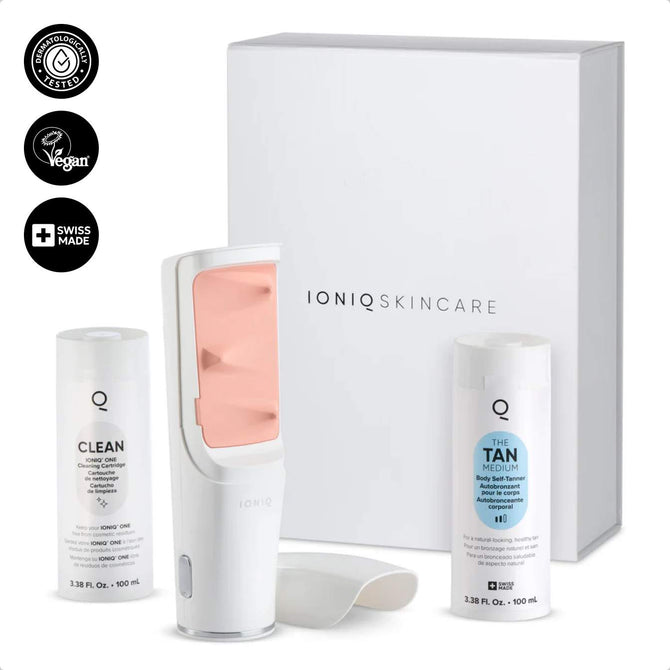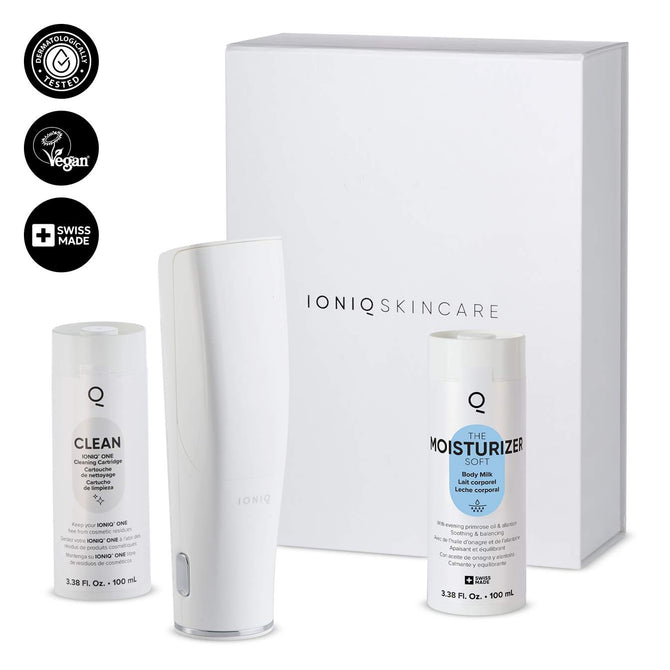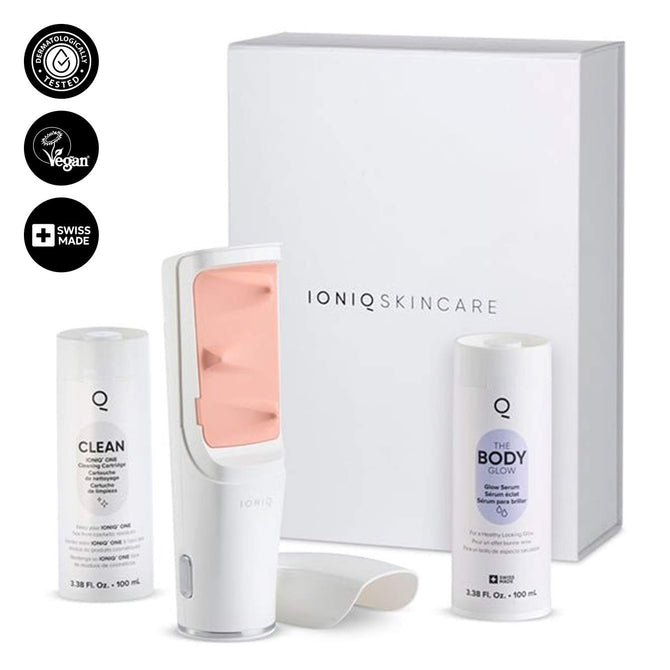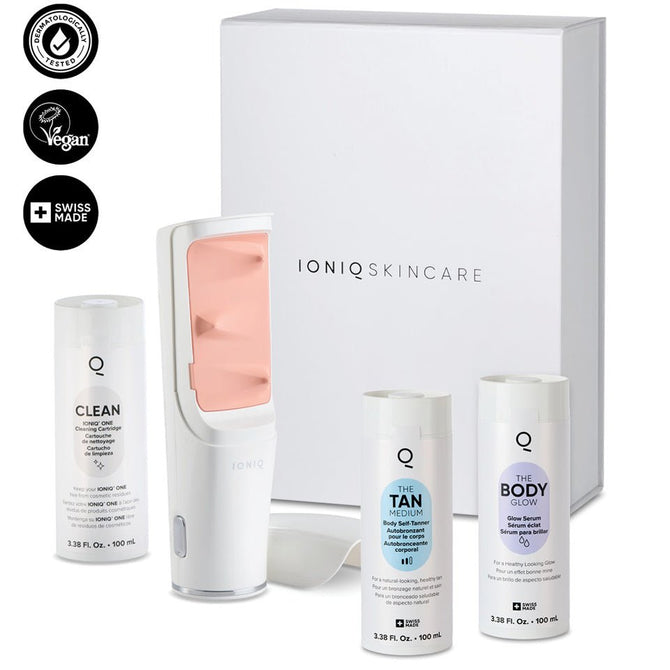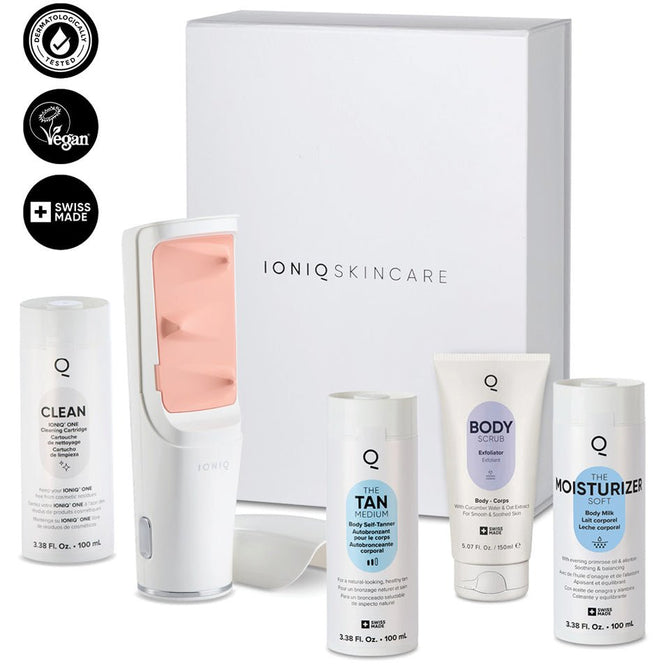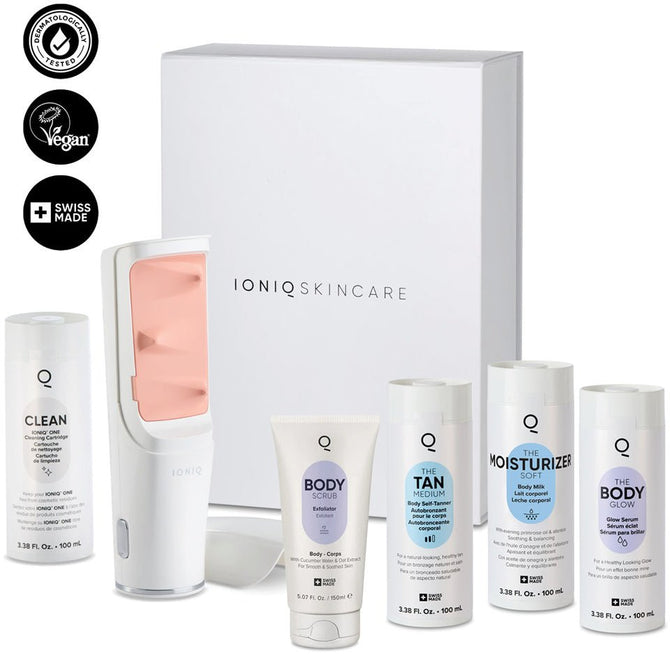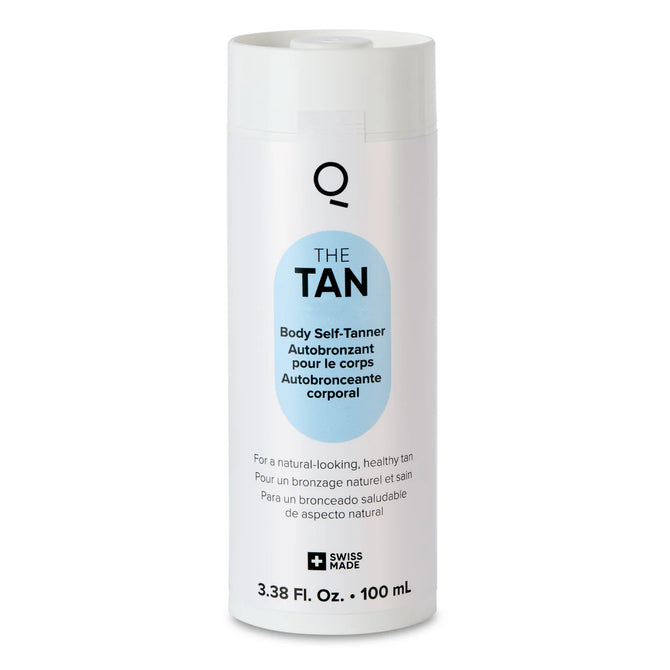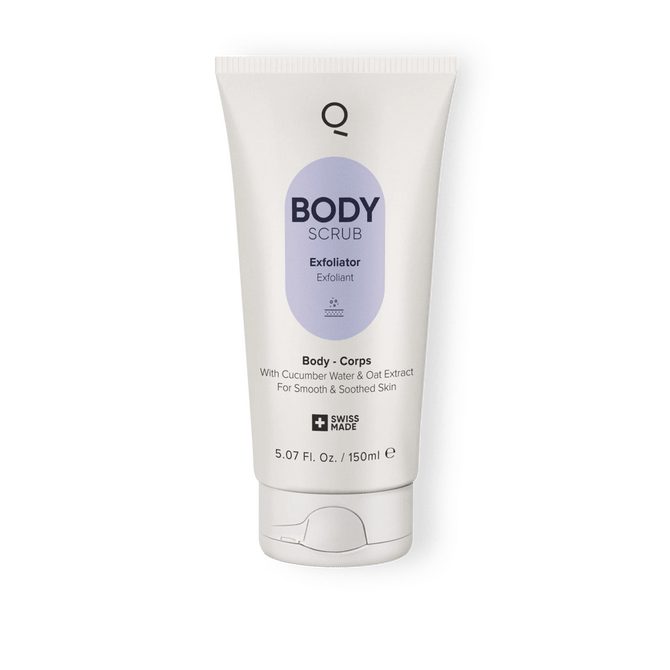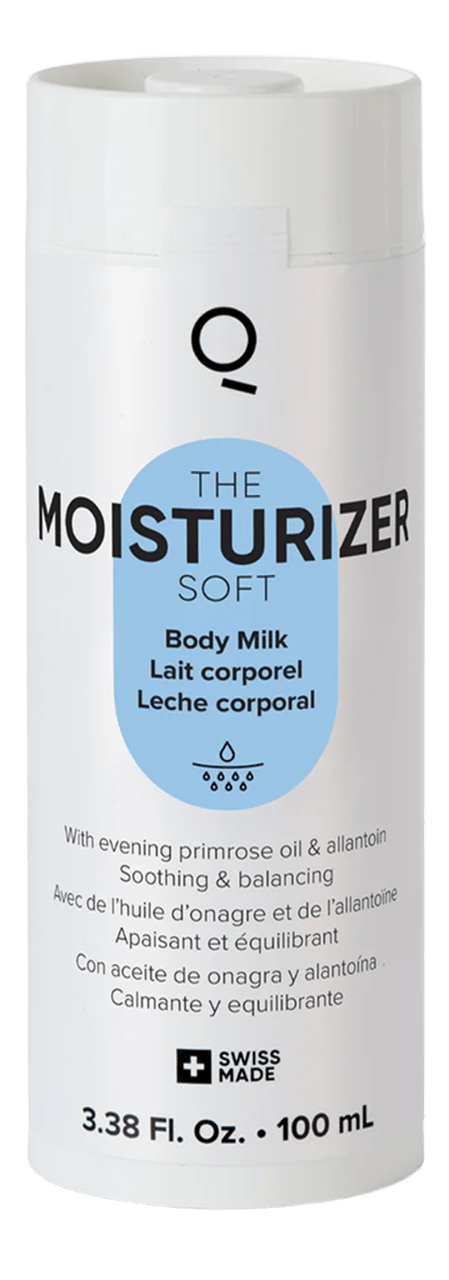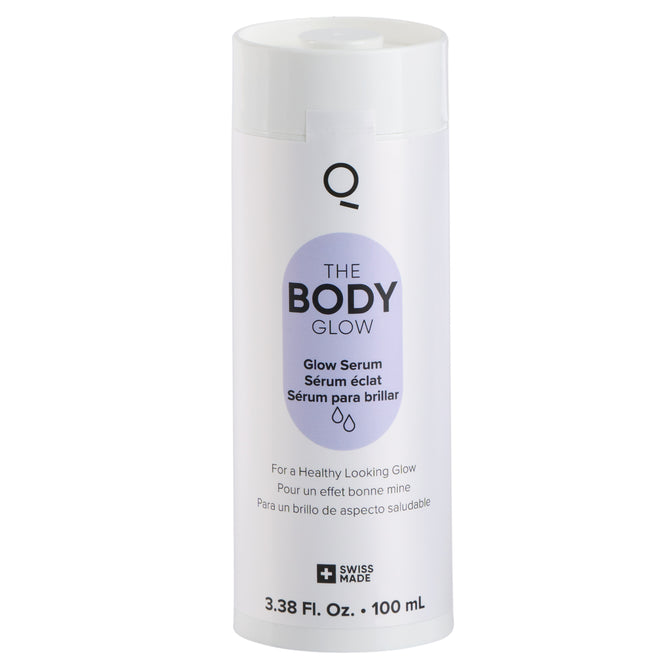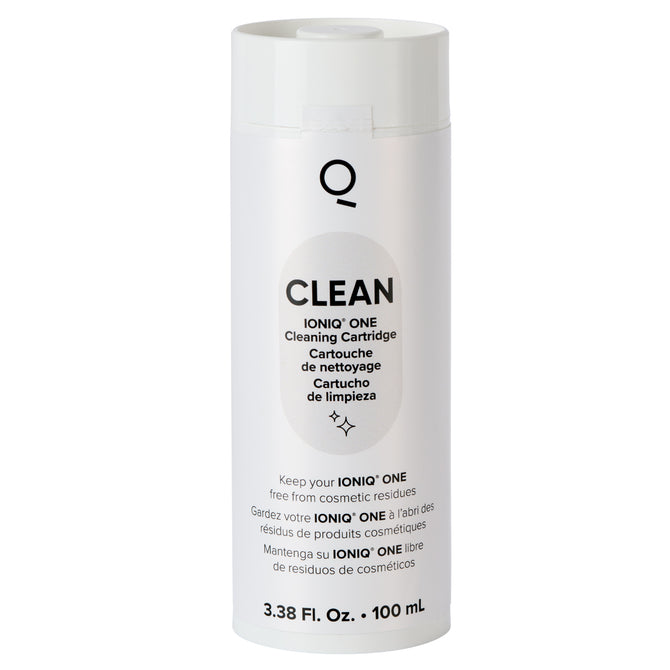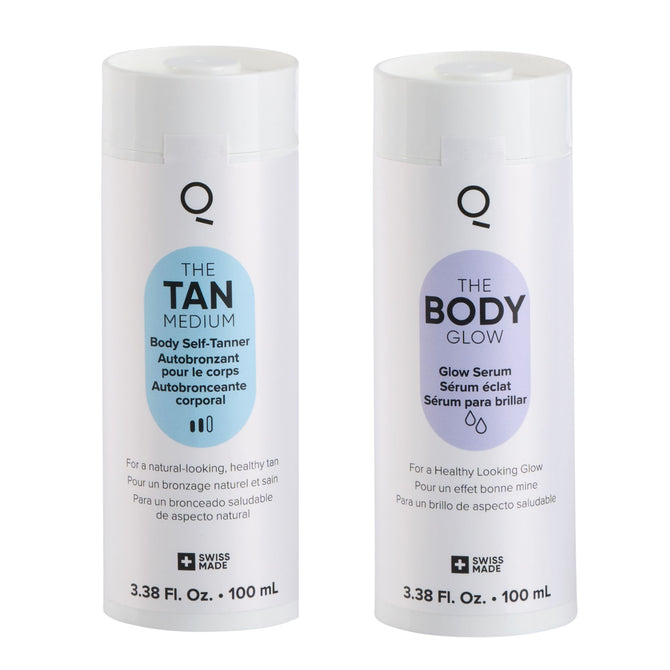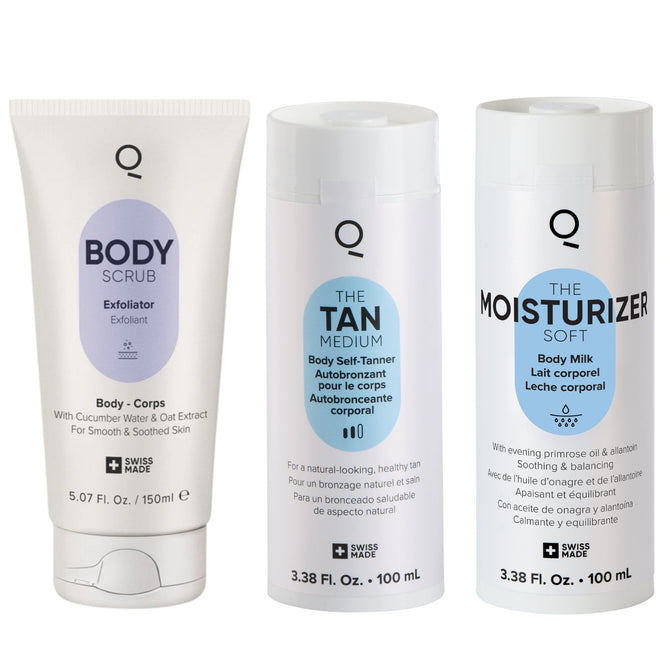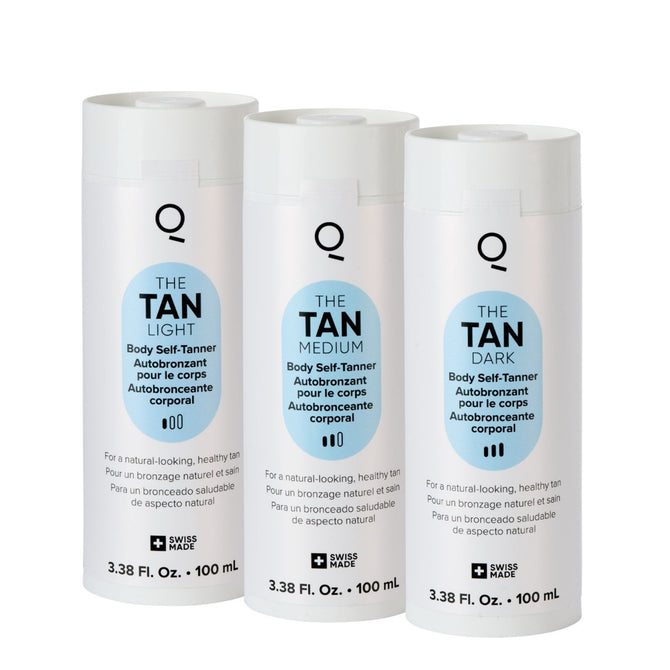
Is Self Tanner Bad for You? Let’s Clear Things Up
There’s a reason this question keeps coming up: is self tanner bad for you. It’s one of those concerns that lingers no matter how popular self-tanning becomes. And it’s a fair concern. You’re putting something on your skin that changes the way it looks, and that brings up real questions about ingredients, safety, and long-term effects.
Here’s the truth: not all self tanners are the same. Some are made with harsh additives, synthetic fragrances, and sticky residues that irritate your skin. Others are designed to be clean, gentle, and skin-friendly. The difference matters.
So is self tanner bad for you? That depends on what you’re using. Let’s clear up the confusion by looking at where this question started and why it’s still being asked.
<!-- split -->
Why This Question Still Matters
To understand why people ask if self tanner is bad for you, it helps to look at the history of tanning products - and how we got here.
The Problem With Early Self Tanners
Go back even ten years and you’ll find a very different self tanning experience. The products then were known for their orange tint, streaky finish, and overpowering smell. A lot of them left skin feeling dry or sticky. Some even caused breakouts or irritation.
Those memories stick. People who had bad experiences with old-school formulas are still wary of trying anything new. And who can blame them?
Confusing Ingredient Lists
Another issue is what’s actually inside these products. Many traditional self tanners list 20 or more ingredients, most of them hard to pronounce. If you’re trying to follow a cleaner skincare routine, that’s not helpful. It makes people suspicious.
When consumers don’t understand what they’re putting on their skin, the natural reaction is to avoid it. And if the product label doesn’t make things clear, it just adds to the uncertainty.
Skin Sensitivity Is Real
Some people have sensitive skin by nature. Others develop it over time from overexposure, poor product choices, or environmental factors. Either way, a self tanner that causes redness, dryness, or breakouts makes people ask the obvious: is self tanner bad for you.
Traditional formulas can be especially hard on delicate or reactive skin. They often contain parabens, sulfates, synthetic dyes, or added fragrances - any of which can cause issues. For people managing eczema, acne, or other conditions, these ingredients can be a no-go.
More People Want Cleaner Products
As wellness culture grows, people are more aware of what goes into their skincare. Labels matter. Transparency matters. More than ever, users are rejecting anything that seems overly synthetic or chemical-heavy.
This push for cleaner ingredients is great - but it also puts more pressure on brands to step up. When companies don’t adapt, they leave consumers with doubts. Those doubts sound a lot like: is self tanner bad for you.
What’s Really Behind the Fear
Here’s a quick breakdown of the most common fears - and why they keep people from self tanning:
-
Fear of bad skin reactions
-
Fear of toxic ingredients
-
Fear of unnatural or embarrassing results
-
Fear of buildup, clogged pores, or residue
These concerns are valid. They show that people care about their skin. But they also show a gap in trust between traditional self tanning products and the people they’re trying to reach.
Common Self Tanner Drawbacks That Still Exist
Even today, many self tanning lotions and creams still have these issues:
-
Strong chemical smell
-
Sticky, tacky residue
-
Difficult, uneven application
-
Rubbing required, which can cause irritation or streaks
-
Fabric staining
-
Uneven fade-out, leading to patchy skin
-
Long wait times with messy aftercare
All of this contributes to the idea that self tanner is bad for you - even when the real issue is how outdated the product is.
What Safer Self Tanning Looks Like
Luckily, things have changed. There are now options that offer skin-safe tanning without all the negatives.
Safer self tanners should meet the following standards:
-
Transparent ingredient lists
-
Free from parabens, sulfates, and silicones
-
Infused with skin-friendly ingredients like aloe
-
Easy to apply with no rubbing required
When a product checks all those boxes, you can tan confidently, without guessing what you’re exposing your skin to.
Skin-Friendly Means More Than Just Clean Ingredients
A good self tanner should feel like skincare. That means:
-
It hydrates and supports your skin’s natural balance
-
It blends evenly without the need for rubbing
-
It doesn’t cause breakouts or irritation
-
It fits into your regular routine as a safe and repeatable option
When a tanning product does that, it’s no longer something you worry about using. It becomes a part of your daily or weekly self-care routine.
Recap: So, Is Self Tanner Bad for You?
Here’s the bottom line:
-
Some self tanners absolutely can be bad for your skin - especially if they contain harsh chemicals, require constant reapplication, or interfere with your skin barrier.
-
But others are built with safety, simplicity, and skin health in mind.
-
The real question isn’t whether self tanner is bad - it’s whether you’re using the right one.
The key is understanding what to avoid and what to look for. When you choose a product that puts skin wellness first, you eliminate the risks that give self tanner a bad name.
And if you’ve ever had a bad experience in the past, it doesn’t mean you have to give up on tanning altogether. It just means it’s time for something better.
Next, let’s compare self tanning to tanning beds and sun exposure - the two most common (and risky) alternatives.
<!-- split -->
Is Self Tanner Safer Than Tanning Beds or Sun Exposure?
A big part of the conversation around is self tanner bad for you has to do with comparison. People want to know how it stacks up next to other tanning options - especially sun exposure and tanning beds. These methods have been around a long time, but their safety record is not good. If you’re trying to tan without long-term damage, self tanner is the safer move. No question.
But this isn’t just about avoiding sunburn. It’s about making a smarter choice for your skin health, year-round.
Comparing UV-Free Tanning with UV Damage
Tanning beds and natural sunlight both expose your skin to ultraviolet radiation. That exposure comes at a cost - visible and invisible.
1. UV Damage Is Cumulative
Every time you tan using UV rays, you’re adding stress to your skin. That damage builds layer by layer. You don’t always see it right away, but it shows up later in the form of:
-
wrinkles and sagging
-
sun spots and hyperpigmentation
-
dull, uneven skin texture
-
long-term collagen breakdown
Over time, that glow you wanted is replaced by skin that looks older than it should.
2. Even “Safe” Sun Tanning Isn’t Safe
Some people believe that if they tan gradually or use SPF, they’re avoiding damage. But any tan caused by UV exposure is a sign your skin has been harmed. Melanin production is your body’s response to injury, not health.
And SPF only reduces the damage - it doesn’t erase it. Every tan is still UV damage, no matter how carefully it’s done.
How Self Tanning Became the Smarter Glow
There was a time when self tanners couldn’t compete. The color was too orange. The smell was too strong. The formulas irritated sensitive skin. But all of that has changed.
Today’s self tanners deliver color without UV damage, with better application methods, cleaner ingredients, and more consistent results. They’ve shifted from being a second-best option to the smarter first choice.
Safer for Every Skin Tone
UV rays don’t discriminate - but people with lighter skin tend to burn more easily. People with darker skin are often told they don’t need to worry, but that’s not true either. Everyone is at risk of sun damage. Everyone can benefit from a safer alternative.
Modern self tanners work across the full range of skin tones. They enhance natural complexion instead of masking it, and they avoid the risks that come with repeated UV exposure.
Full Control Over Color
With sun tanning or tanning beds, the results depend on time, intensity, and your skin’s reaction. That can mean overexposure, uneven results, or unexpected redness.
Self tanner gives you full control:
-
You decide the depth of color
-
You can build gradually
-
You can touch up where needed
-
You can reapply without damaging your skin
That kind of precision isn’t possible with sunlight or a UV bed.
Year-Round Glow Without Year-Round Risk
One of the biggest reasons people turn to tanning beds is convenience. In colder months or cloudy areas, outdoor tanning isn’t realistic. But the risk of beds doesn’t change just because it’s winter.
Self tanner gives you the same flexibility. You don’t need weather, seasons, or appointments. You can tan safely any day of the year, right from home.
<!-- split -->
Why Some People Still Rely on UV Tanning - and Why It’s Not Worth It
Even with all the risks, some people still choose sunbathing or indoor beds. Here’s why - and why those reasons fall short.
They think UV tans look more natural: Today’s self tanners offer a full spectrum of undertones - from golden to olive to deep bronze. When applied well, the results match your skin’s natural tone without the orange cast or harsh fade.
They’ve had bad experiences with self tanner in the past: Many of the older products caused streaks, dryness, or blotchy color. That’s a formula problem - not a category problem. Modern options are smoother, more forgiving, and much easier to apply evenly.
They don’t trust the ingredients in self tanner: This used to be a fair concern, but cleaner formulas have changed that. The right self tanner doesn’t need parabens, sulfates, or questionable preservatives. Skin-friendly ingredients like aloe and vitamin E now play a leading role.
They think short sun exposure isn’t harmful: It adds up. Even casual tanning in the sun can increase long-term damage. There’s no such thing as a “safe tan” when UV rays are involved.
Why Self Tanner Is the Safer Choice
Self tanning has come a long way. But what really makes it safer than UV tanning is how it works:
-
No UV exposure
-
No cell-level damage
-
No breakdown of collagen or elastin
That’s not just better - it’s smarter.
And when the formula supports skin health - hydrating, soothing, and fading evenly - you get a tan that fits into your wellness routine instead of working against it.
A Smarter Future for Skin Health
The shift is already happening. More people are rethinking how they tan. They’re choosing products that:
-
Let them control the outcome
-
Work for their schedule and their skin
-
Align with their values around safety, simplicity, and transparency
This isn’t about giving up the glow. It’s about giving up the risk.
Because when you ask is self tanner bad for you, the real answer depends on the alternative. And if that alternative is UV exposure in any form, the answer becomes clear: self tanning is the safer path - by far.
Why the IONIQ ONE Sprayer + TAN Is a Better Way to Glow
By now, it’s clear that not all self tanners are the same. The question is self tanner bad for you doesn’t have a one-size-fits-all answer - it depends on what you’re using. That’s where IONIQ ONE Sprayer + TAN changes everything.
We’ve already shown how self tanning is safer than UV exposure. But within the world of self tanners, there’s still a gap between what’s acceptable and what’s exceptional. Most products still rely on outdated methods: streak-prone creams, messy mousses, rubbing with your hands, and patchy results. That’s not just frustrating - it’s the kind of experience that makes people doubt self tanners altogether.
So we set out to make a smarter way. One that’s faster, cleaner, more even, and easier on your skin. The IONIQ ONE Sprayer + TAN, the best at-home spray tan system is built from the ground up to give you a better tan - without the trade-offs.
Touchless Application Means Less Irritation, More Even Results
One of the biggest flaws with traditional self tanners is how they’re applied. Most products have to be rubbed in by hand, often with a mitt, glove, or just your bare palms. That means:
-
Pressure and friction on the skin
-
Missed spots, especially on the back or shoulders
-
Streaks and uneven patches
-
Contaminated application tools
All of that makes you more likely to overwork your skin, especially if you’re reapplying regularly.
With the IONIQ ONE Sprayer, an at-home spray tan machine we’ve eliminated that problem entirely.
Our sprayer uses Magnetic Skin Technology, a patented innovation that charges the tanning droplets to seek out your skin - attracting them like a magnet. What that means for you:
-
Zero rubbing
-
No contact with your hands
-
Full-body coverage in under three minutes
-
Even application, even in hard-to-reach areas
You don’t have to be a pro. You don’t have to guess where you missed a spot. The wrap-around mist delivers full 360° coverage, adapting to your body’s curves and contours so the color goes on smooth every time.
And because you’re not using your hands or dragging anything across your skin, there’s far less chance of irritation. No friction, no clogged pores, no buildup in sensitive areas like the face, neck, or chest.
This is the future of at-home tanning: fast, even, touchless.
Cleaner Formula, Cleaner Skin: No Parabens, No Streaks
If you’re asking is self tanner bad for you, part of the answer lies in the ingredients. A lot of formulas out there still rely on parabens, silicones, sulfates, or artificial perfumes - especially to cover up the telltale self-tanner smell.
Those additives don’t just sit on the skin. They can mess with your skin barrier, clog your pores, or trigger redness. Some even stay on your sheets, towels, or clothes, leaving behind stains or residue long after the tan develops.
IONIQ TAN was developed to avoid all of that.
We use a vegan, aloe-infused formula designed to support your skin - not work against it. Here’s what you get:
-
No parabens
-
No sulfates
-
No silicones
-
No fragrance overload
-
No alcohol sting
-
No transfer to fabric
And while some traditional tanners leave a sticky film that takes hours to fully dry, our formula absorbs quickly and develops into a natural-looking tan over 6 to 8 hours. You get that bronzed, golden look - without orange tones or buildup.
It’s clean. It’s effective. And it feels like skincare.
Control, Convenience, and Confidence - Right at Home
A big reason people still go to salons for a spray tan is the equipment. They assume a pro-level tan requires pro-level tools. But with IONIQ ONE Sprayer + TAN, that same result is now possible without leaving your bathroom.
The device is cordless, lightweight, and designed for full-body usability. That means:
-
You can tan standing, sitting, or lying down
-
You don’t need a second person
-
You can tan your back, legs, arms, face - everything - by yourself
-
You don’t need to plug it in while using it
The result is more freedom and more control. You can tan before bed, after a shower, before a big event, or while traveling. The sprayer is splash-proof and portable, so it fits into your routine - not the other way around.
One TAN cartridge gives you 2 to 3 full-body applications. The device also includes a self-cleaning system, so you’re not dealing with mess or buildup between uses. No dripping. No clogged nozzles. No cleanup stress.
The sprayer helps you build color gradually or go deeper when you want - without ever overdoing it.
That means more than just a good tan. It means confidence.
You know your skin looks even. You know you didn’t damage it. You know you did it yourself, on your schedule, with tools you trust.
That’s the kind of control that makes self tanning feel empowering - not risky.
When Self Tanner Works for You, Not Against You
The whole point of self tanning is to feel good in your skin. But that only works if the product supports your skin’s needs. And most don’t. They require rubbing, waiting, scrubbing, and second-guessing. You’re constantly working around the product.
With IONIQ ONE Sprayer + TAN, the product works around you. It adapts to your skin. It fits your life. And it respects your skin health.
So when someone asks is self tanner bad for you, the answer becomes a lot clearer. No - it’s not, when you choose one that’s made with real care, built with technology that removes the guesswork, and designed to make your skin feel as good as it looks.
<!-- split -->
Still Wondering if Self Tanner Is Bad for You? Here’s the Bottom Line
The question is self tanner bad for you doesn’t go away easily - because people are right to be cautious about what they put on their skin. And in truth, not every self tanner deserves a green light. Some are filled with cheap fillers, messy formulas, or questionable ingredients that can irritate your skin or leave you with results you don’t want.
But that doesn’t mean self tanning itself is the problem. It means the product you choose makes all the difference.
So let’s make it simple. Here’s the bottom line, once and for all.
It’s Not About “If,” It’s About “Which One” You Use
Self tanner can be safe, clean, and skin-friendly - or it can be a problem. It depends entirely on what you’re using.
Bad self tanners leave you with:
-
streaks and blotches
-
sticky or greasy residue
-
artificial smells
-
clogged pores and breakouts
-
stained clothes and sheets
-
ingredients that dry or inflame your skin
These are the reasons why people still ask is self tanner bad for you. And it’s fair - because that experience is still way too common with traditional lotions, mousses, or sprays.
But the good ones tell a different story:
-
even, natural color that develops gradually
-
lightweight, fast-absorbing application
-
no contact with your hands or mitts
-
skin-friendly formulas made without parabens or sulfates
-
no mess, no transfer, no weird smell
That’s not wishful thinking. That’s what happens when the formula is clean and the application method is modern.
The issue isn’t whether self tanner is bad - it’s whether the one you’re using is up to standard.
Ready to Glow Smarter? Try the IONIQ ONE Sprayer + TAN
There’s no longer a reason to gamble with your skin. If you want color without compromise, and results without stress, it’s time to rethink what a self tanner should be.
With the IONIQ ONE Sprayer + TAN, you’re not just avoiding the typical problems - you’re moving forward with something better:
-
touchless, full-body application in under three minutes
-
Magnetic Skin Technology that ensures perfect coverage
-
aloe-infused, vegan, skin-safe formula
-
no rubbing, no staining, no irritation
-
cordless, portable, self-cleaning device
You don’t need a mitt. You don’t need a mirror. You don’t even need a second person. Just spray, let it develop, and go. That’s it.
For people who care about skin health, who are done with the patchy results and heavy scents of old-school tanners, and who want something that actually fits their routine - the IONIQ ONE Sprayer + TAN is the solution.
Because self tanner isn’t bad for you when it’s made the right way.
And you deserve better than average.
References
- PubMed/NCBI – Properties and Safety of Topical Dihydroxyacetone in Sunless Tanning Products: A Review
https://pubmed.ncbi.nlm.nih.gov/37697919/
- American Cancer Society – Is It Safe to Get a Fake (Sunless) Tan?
https://www.cancer.org/cancer/risk-prevention/sun-and-uv/tanning-pills-and-products.html
- PMC/NIH – In Search of the Perfect Tan: Chemical activity, biological effects, business considerations, and consumer implications of dihydroxyacetone sunless tanning products
https://pmc.ncbi.nlm.nih.gov/articles/PMC10083914/

